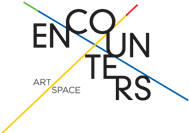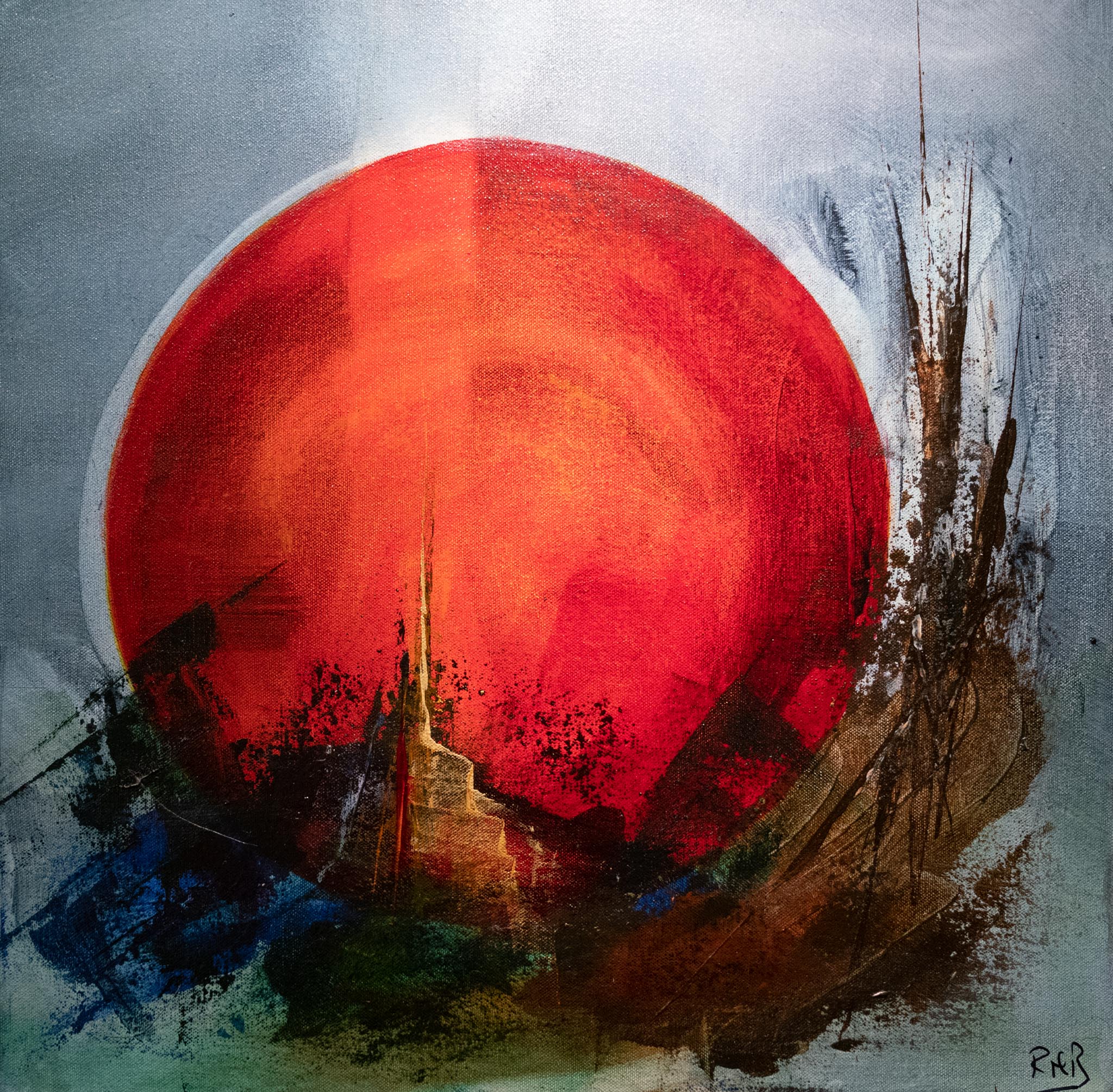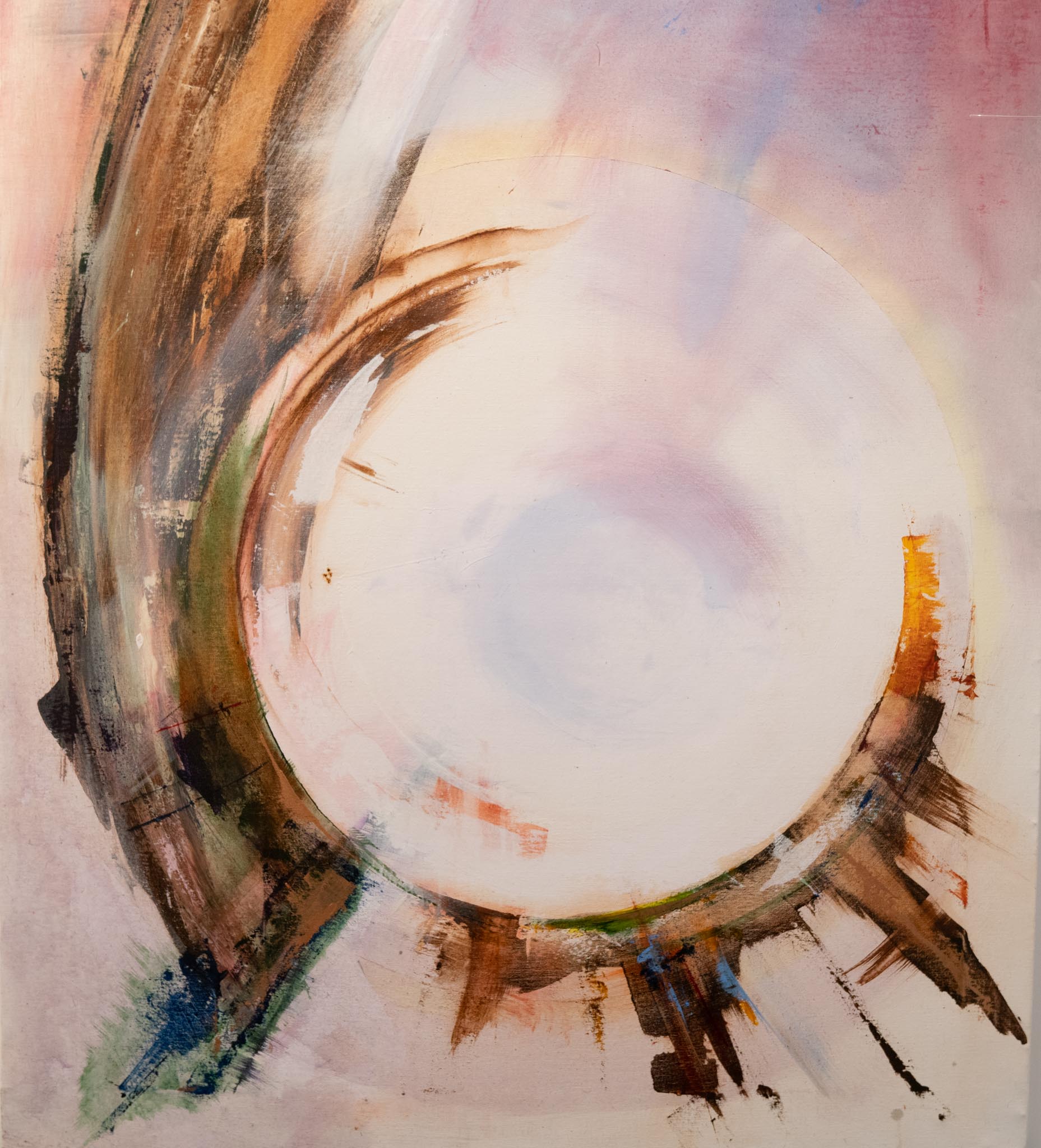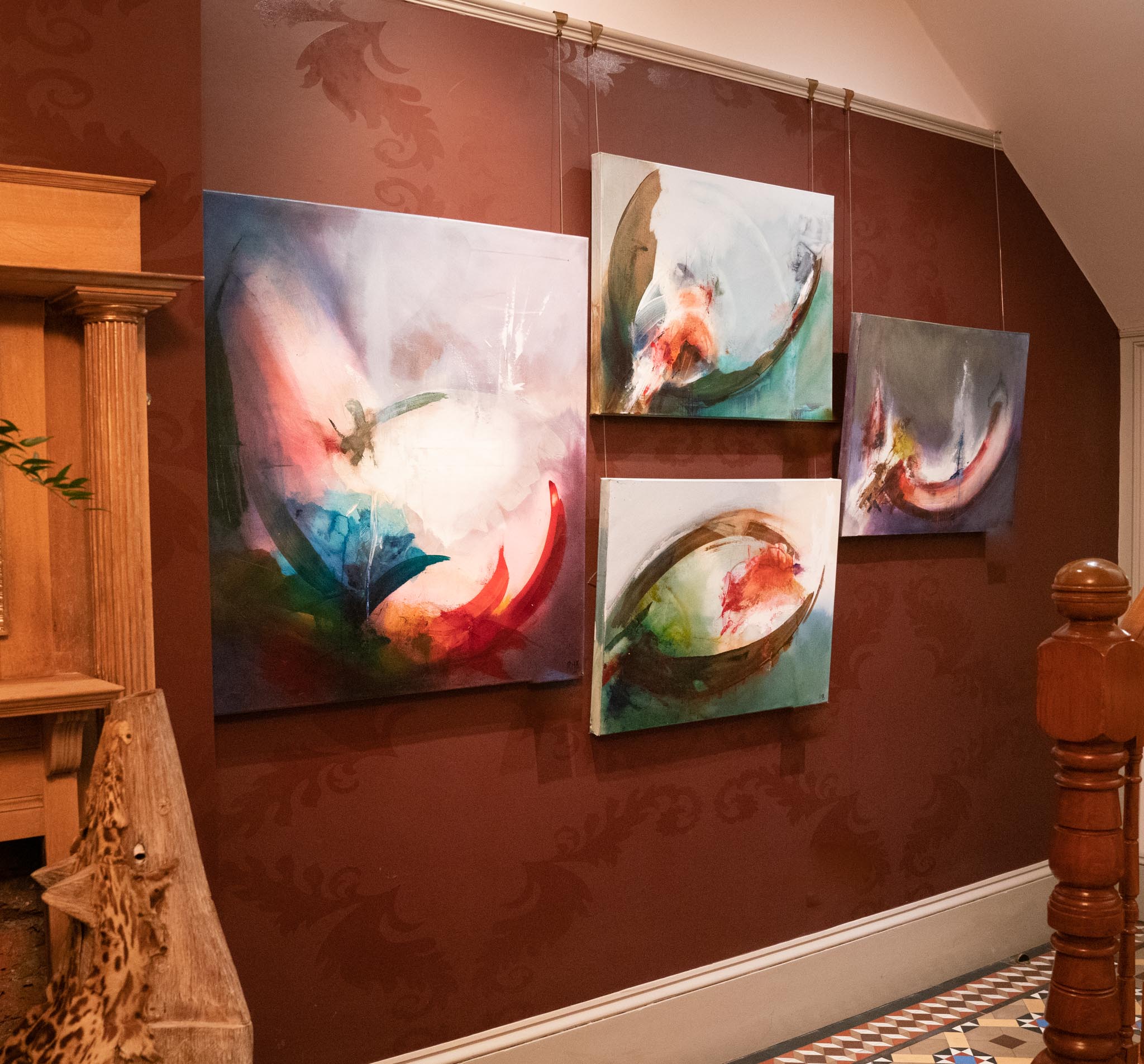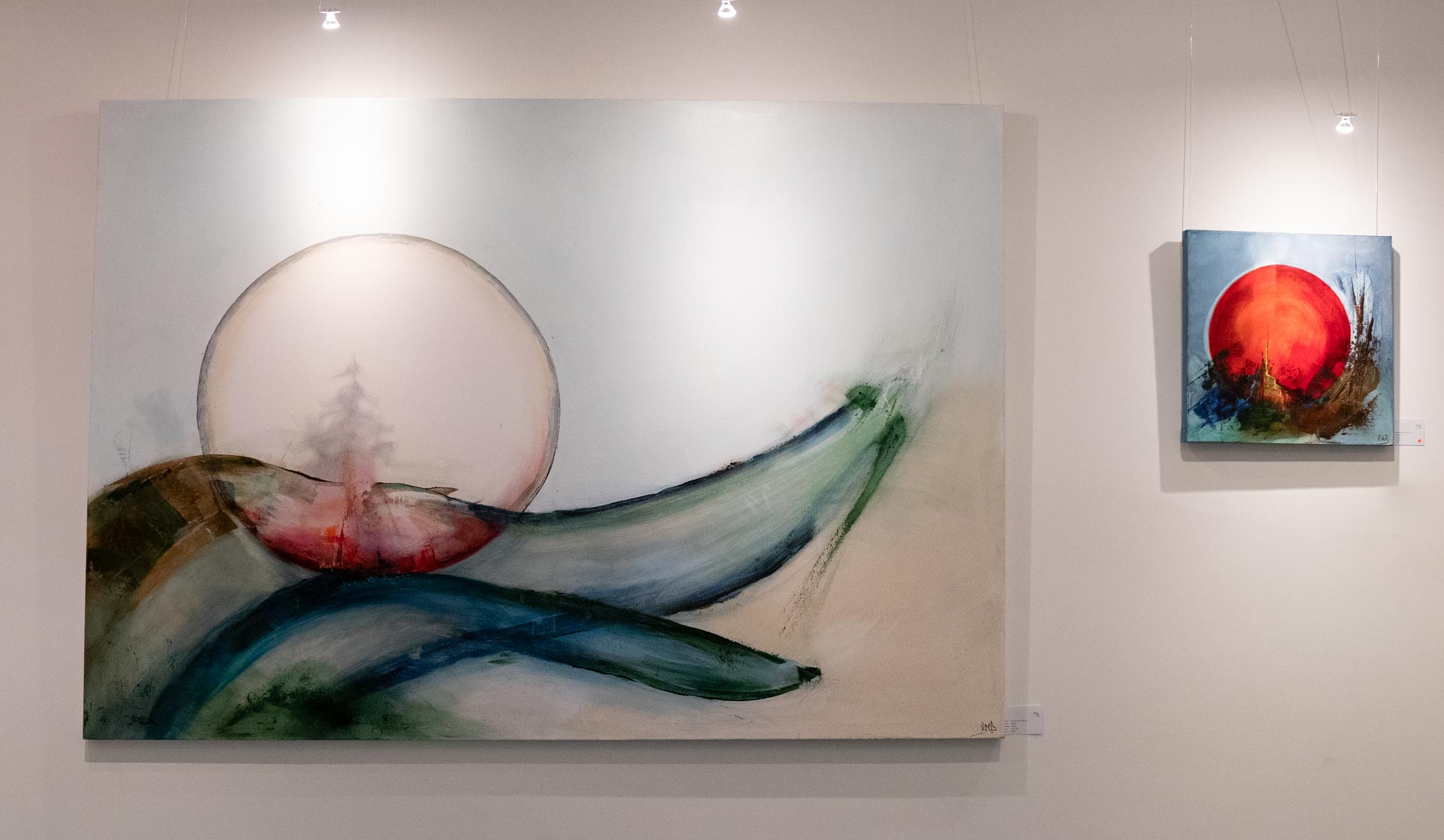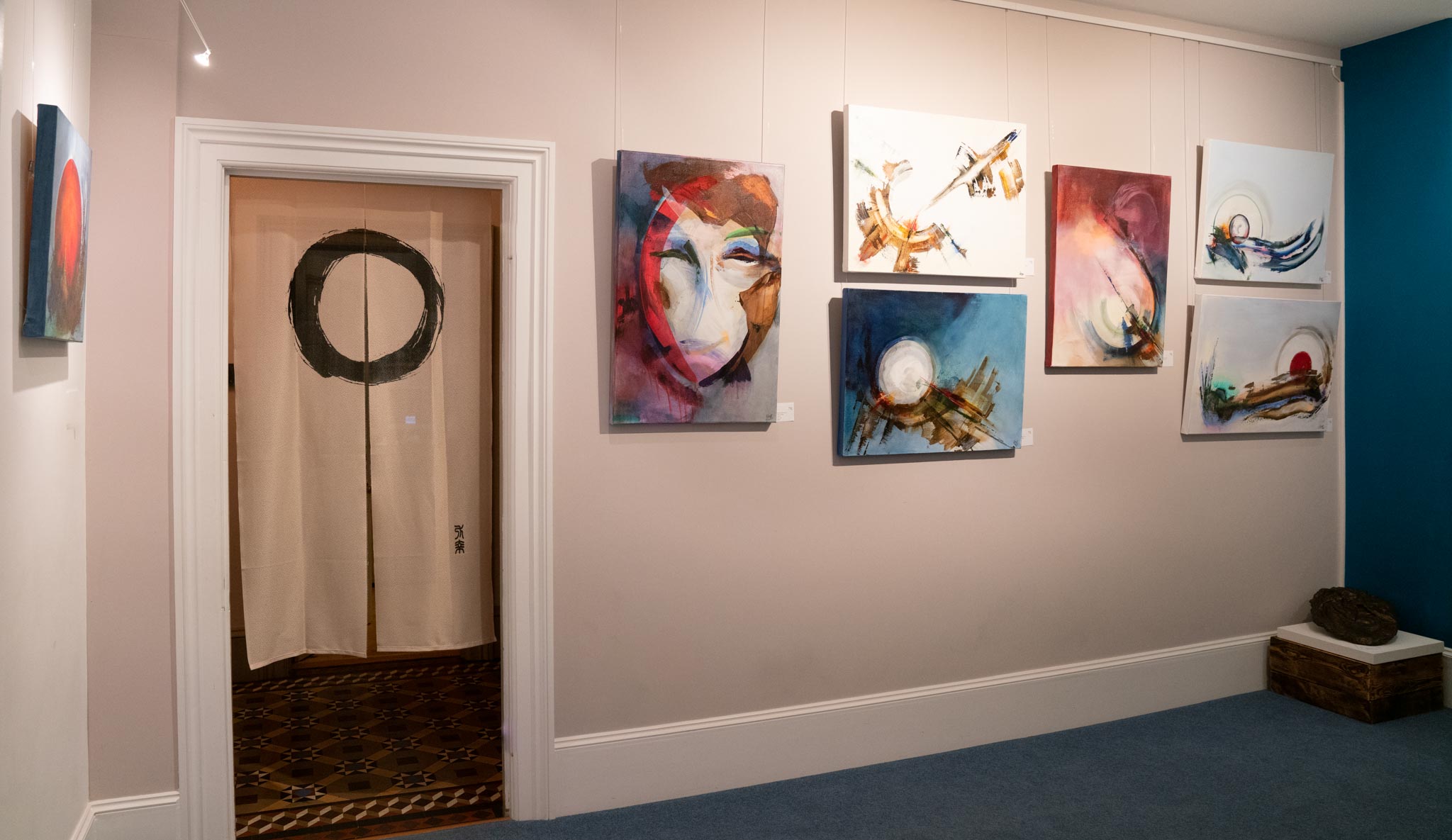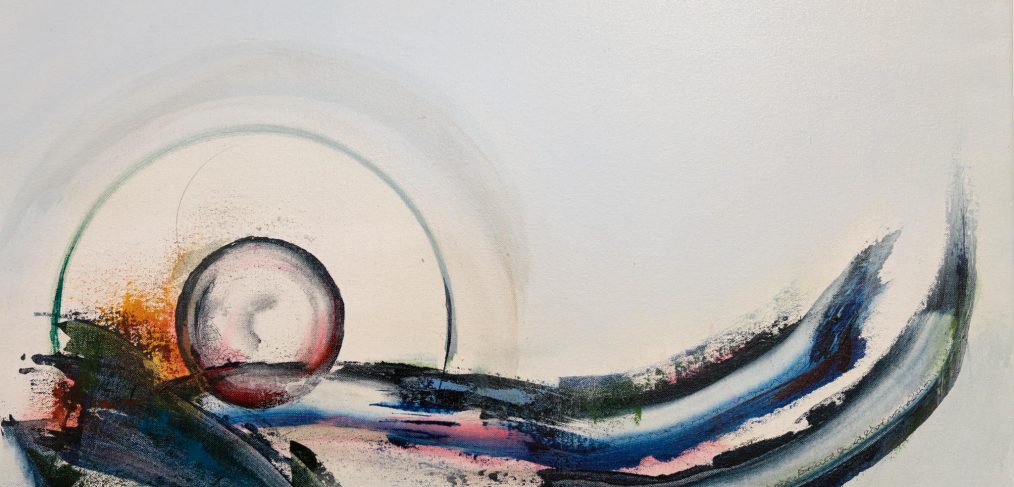
‘The Japans’ and ‘From the Font’ by Romany Bruce
For this special exhibition in Encounters Art Space in 2019 the curator, Miladys Parejo, wrote:
Earlier paintings ‘From The Font’ are shown with ‘The Japans’ series as they have a shared intrinsic narrative that combines as a single body of work.
During the autumn of 2018 Romany travelled in Japan and he found that “ducking under the noren (a traditional Japanese fabric divider) usually leads to an evening of exhilaration and excitement”. Let’s explore Romany’s journey through his paintings.
Looking closely at these new works, inspired by Romany’s time in Japan, there are echoes of his persistent interest in the trajectory of strong lines. But the feeling tone is subtle, contained and there are hints of undefinable mystery. The palette is soft, smooth; as if absorbing the tranquillity of the artist’s surroundings, evoking the ‘Hakone Hot Spring’ in acts of respect and submission. Romany has encountered his own deep font of elation.
I invite you to see the work titled, Hakone2, that captures the artist’s gratitude for being in a new land and his delight in a first encounter with a force that is suggestive and promising. The red circle seems to emerge in slow motion, holding light, serving as an anchor of the possible.
Unexpectedly Romany’s palette evolved in ways that embraced his former identity. He honours the energy of the Samurai with an unapologetic strength, reflecting the battlefield. Brushstrokes of red and blue show a determination to say: “I am back”.
Shinden testifies to Romany’s determination. He leaves behind initial timid anchors. What emerges is bold and provocative, as if saying: “everything can be built from here”. In this work, respect for the past is honoured and the new finds its place. Romany has discovered a corridor that links his artistic past with his present. It is here that we see a continuous and discontinuous flow of creation From The Font to The Japans.
A Shinden is a form of Japanese mansion with rooms linked by a central corridor so the parts become a whole. Romany found his internal corridor, and this analogy enabled the collection to be arranged as a single body of work. Its narrative is intriguingly continuous and discontinuous.
By passing under the noren you have become one with Romany’s exhilaration and excitement.
.
in Past News
